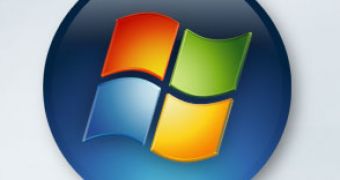DirectX debuted back in 1995, and, with the upcoming Windows client, the underlying graphics technology of the operating system will evolve to the next level. Not only will DirectX 11 be available for Windows 7, but Microsoft has also promised that this time around it will provide backwards compatibility, at least as far as Windows Vista goes.
Furthermore, according to the Redmond giant, DirectX 11 is designed to deliver additional power in the hands of application developers, enabling them to deliver high-fidelity graphics with the programs tailored for Windows 7.
“Through a new set of DirectX APIs, Win32 developers can take advantage of the latest innovations in GPUs to add fast, scalable, high-quality, 2D and 3D graphics, text, and images to their applications. On the latest LCD displays, DirectX APIs can display desktop and window content using color depth greater than 8 bits per color component,” Microsoft revealed.
When moving from Windows XP to Windows Vista, because of the architectural changes of the Windows client, Microsoft made DirectX 10 a Vista exclusive component. This move failed to bode well with both the gaming development community and gamers themselves, with Nvidia and ATI initially struggling to produce high-quality DX10 compatible hardware.
“With DirectX, Win32 developers can also use the GPU’s parallelism for general-purpose computation such as image processing, and can render to DirectX 10 hardware, DirectX 9 hardware, the CPU, or to a remote Windows computer. These technologies were designed to interoperate with GDI and GDI+, ensuring that developers can easily preserve their existing investments in Win32 code,” Microsoft added.
With a launch planned for thee years from the moment Windows Vista hit the shelves, Windows 7 will not suffer the same fate as its precursor when it comes to winning over the gaming community. Taking into consideration Vista's current growth pace, Microsoft will have between 250 and 300 million Windows computers ready to be upgraded to DirectX 11 by the time Windows 7 hits. This is, by any means, an extremely attractive figure for game developers, which should hesitate less to jump on the DirectX 11 wagon.
Microsoft revealed that “these enhanced graphics capabilities are provided by the following COM-based APIs:
- Direct2D for drawing 2D graphics.
- DirectWrite for arranging and rendering text.
- Windows Imaging Component for processing and displaying images.
- Direct3D 10 for drawing 3D graphics.
- Direct3D 11 for drawing 3D graphics, and providing access to next-generation GPU technologies, such as tessellation, limited support for texture streaming, and general purpose computing.
- DirectX Graphics Infrastructure (DXGI) for managing devices and GPU resources, and providing interoperability between DirectX and GDI.”

 14 DAY TRIAL //
14 DAY TRIAL //